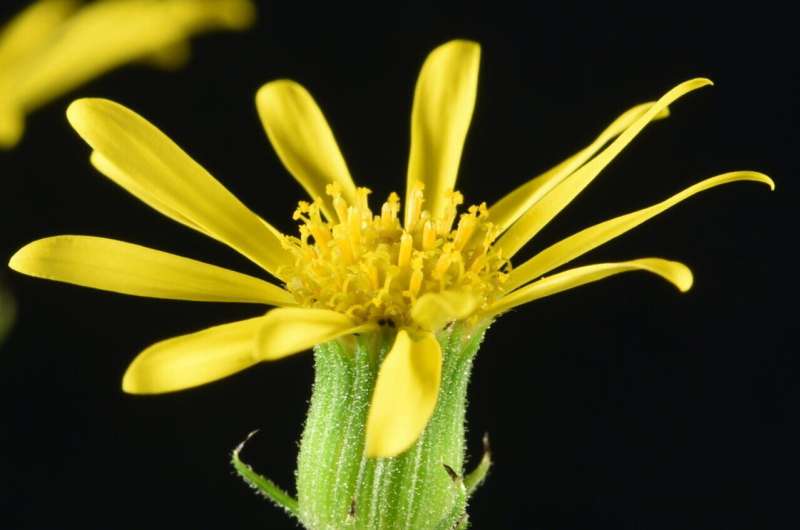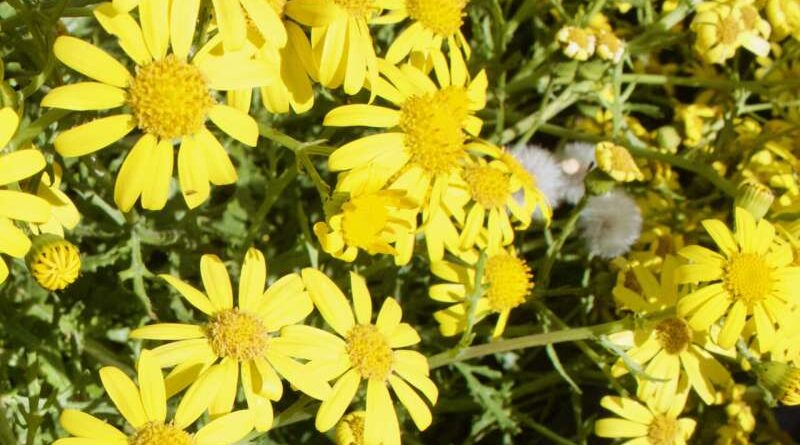From Mount Etna to the UK: Genetics reveals Oxford ragwort’s unique journey and resilience

I’m getting old. Credit: Bruno Nevado
A descendant of Sicilian ancestors, this daisy-family plant originated in the UK, escaped from the botanical garden, and began to conquer the area during the Industrial Revolution.
Rarely have the details of a story as fascinating as this been revealed, especially since there are several cases where the emergence of a new species can be traced back only 300 years. Oxford ragwort, Senecio squalidus, a yellow-flowered plant from the daisy family, first appeared in the 17th century at the Oxford Botanic Garden after two species from Mt. of Etna in Sicily alone.
Bruno Nevado, a researcher at the Center for Ecology, Evolution, and Environmental Changes (CE3C) at the Faculty of Science of the University of Lisbon (CIÊNCIAS), leads the study that has been published in the journal. Current Biology. The research reveals the critical period of the species’ existence—from its origins to the United Kingdom’s colonization during the Industrial Revolution—through the lens of genetics.
Between the late 17th and early 18th centuries, Senecio chrysanthemifolius and Senecio aethnensis, plants common on the rugged slopes of Mount Etna in Italy, were introduced to the gardens of the Duchess of Beaufort in Gloucestershire, England, by plants Sherard Cup and William Francescoani. On Mount Etna, these plants were often mixed because of their unique habitats—S. chrysanthemifolius below 1,000 meters and S. aethnensis above 2,000 meters. However, in the UK, circumstances brought them closer together, resulting in hybrids.

I’m getting old. Credit: Bruno Nevado
In the first two decades of the 18th century, these hybrids were cultivated in the famous Oxford Botanic Gardens, where they eventually gave rise to a new hybrid, Senecio squalidus (hence Oxford ragwort). . By the end of the 18th century, S. squalidus had escaped from its captivity and spread into the urban environment of Oxford, establishing itself and colonizing the UK.
Perhaps due to its descent from species adapted to a strong volcanic environment, this hybrid species thrived, later spreading through the railroad networks of the Industrial Revolution in the 19th century. It was “by train” that Oxford ragwort with yellow flowers reached almost all parts of the UK within 150 years. Today, this species can be found from Scotland to Wales, and even Ireland , is very effective on railway tracks, roads, footpaths, industrial areas and other disturbed areas.
Senecio squalidus is one of the few hybrids of recent origin. Nevado emphasizes this rarity, “Typically, hybrids are very old, and it is difficult to separate processes that contributed to differentiation from those that affected hybrids later in their evolution. But with this species, we can study the processes involved in the early stages of speciation.”

I’m getting old. Credit: John Baker
In this new study, carried out in collaboration with researchers from several British universities and the Wellcome Sanger Institute in Cambridge, the genome of S. squalidus was sequenced. Genetic analysis of S. squalidus and its parental species revealed a rapid rearrangement of the hybrid genome, driven by the resolution of genetic incompatibility between the parental species and natural selection. These processes resulted in unique genes, combining traits from both parents, allowing new species to thrive in environments where neither parent could survive. .
Because of this unique evolutionary journey, “Oxford ragwort serves as a small, unique laboratory for the study of hybridization and its role in the emergence of new species and the colonization of harsh environments,” to complete Nevado.
Additional information:
Bruno Nevado et al, Genomic changes and stability after homoploid hybridization of the Oxford ragwort Senecio squalidus, Current Biology (2024). DOI: 10.1016/j.cub.2024.08.009
Offered by the University of Lisbon
Excerpt: From Mount Etna to the UK: Genetics reveal unique Oxford ragwort journey (2024, September 12) Retrieved September 12, 2024 from https://phys.org/news/2024-09 -mount-etna-uk-genetics-unveil.html
This document is subject to copyright. Except for any legitimate activity for the purpose of private study or research, no part may be reproduced without written permission. Content is provided for informational purposes only.
#Mount #Etna #Genetics #reveals #Oxford #ragworts #unique #journey #resilience
